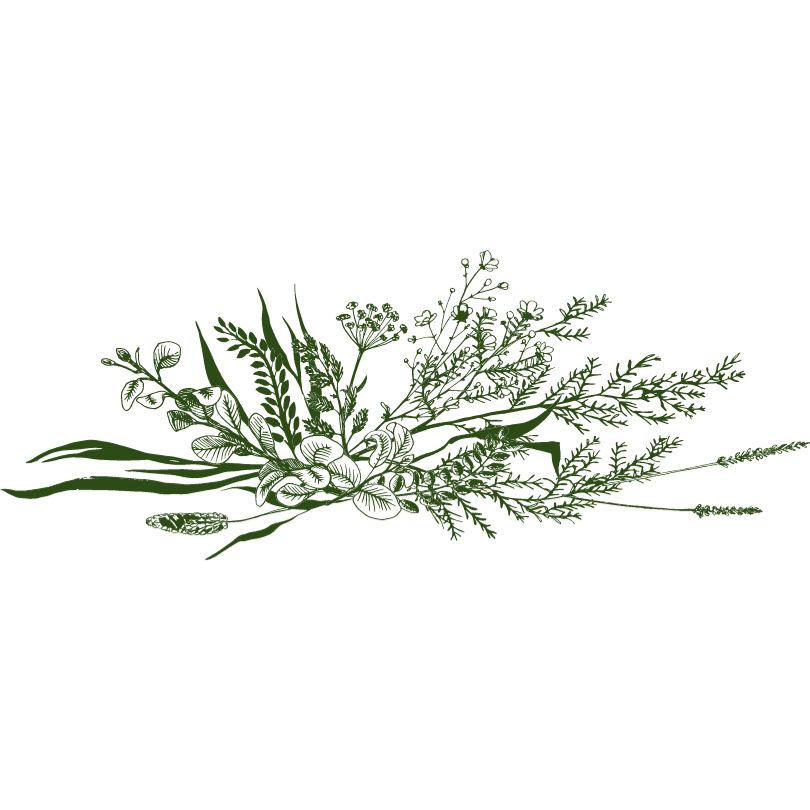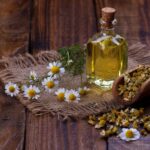(Solidago spp.)
Goldenrod
A member of the daisy family and a beautiful and versatile flowering plant that often gets an undeserved bad reputation as a cause of allergies.
However, this vibrant, yellow-blossomed plant has a wide range of beneficial properties that make it a valuable addition to your herbal medicine cabinet and garden.
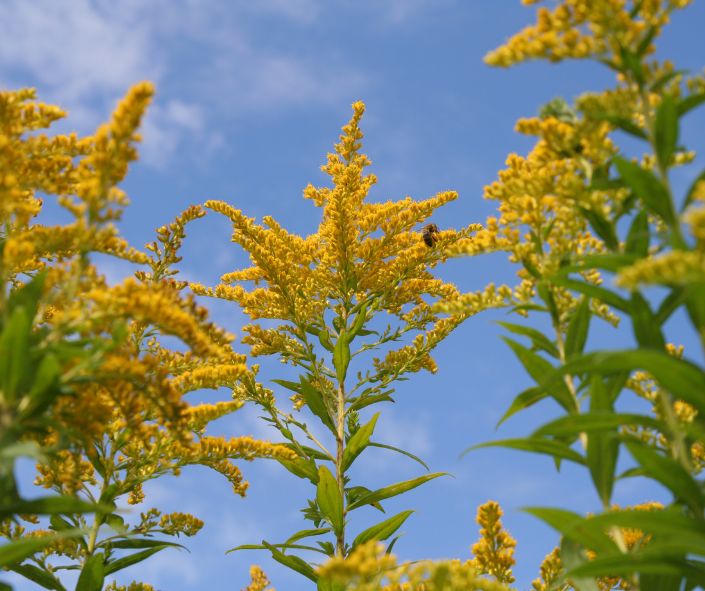
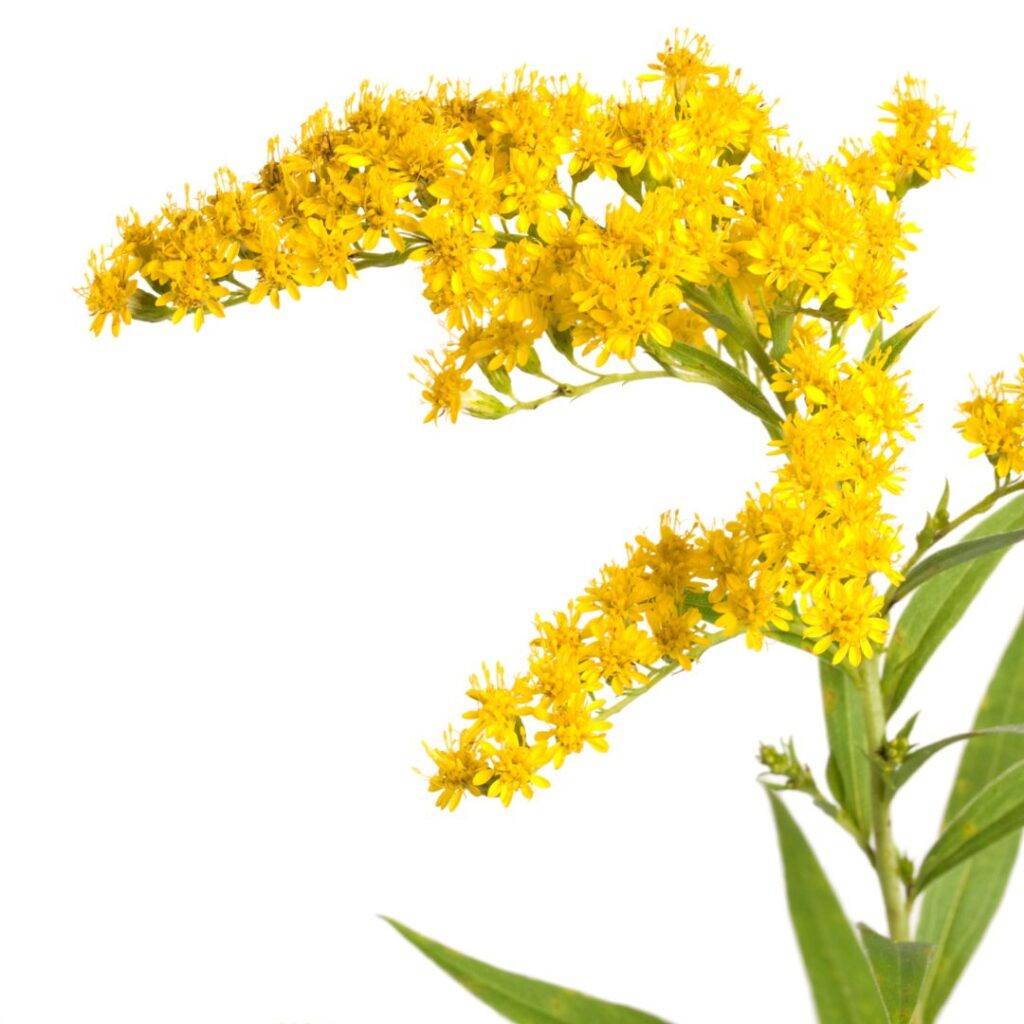
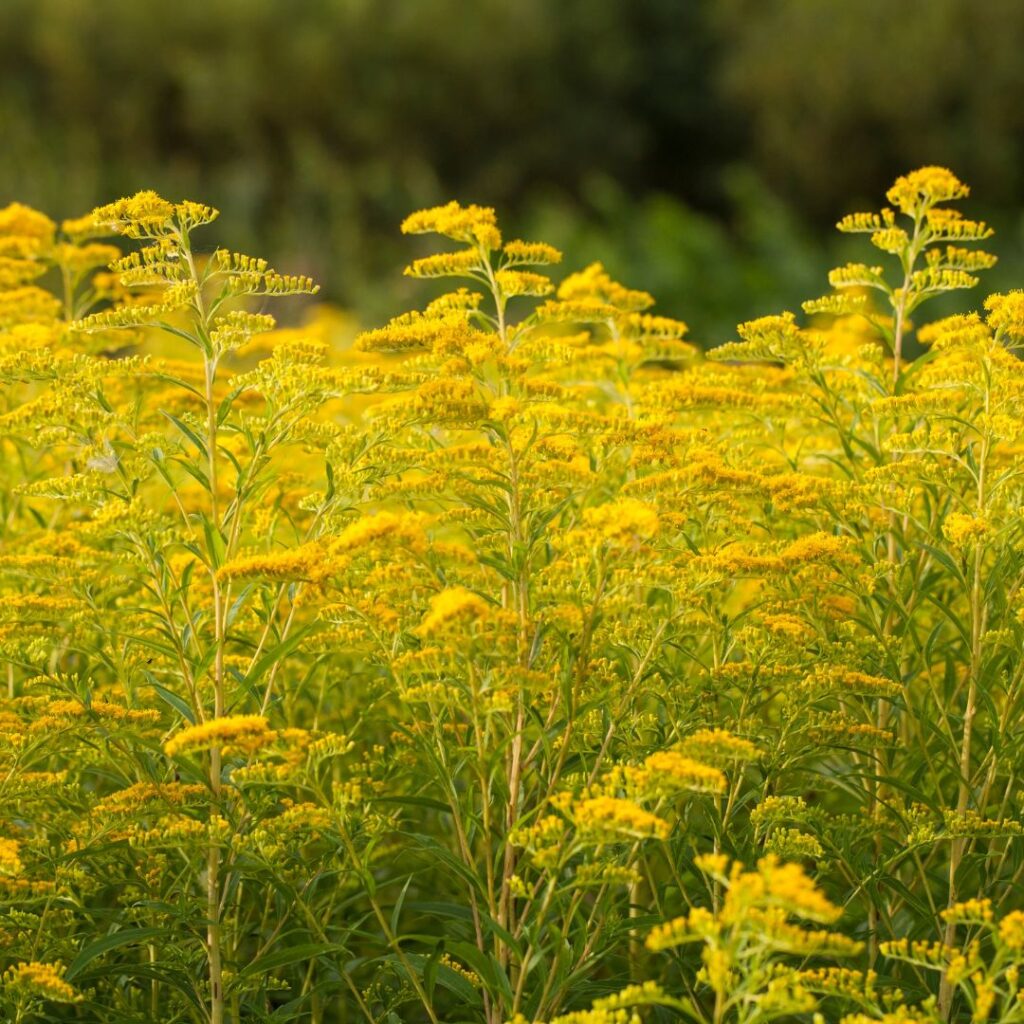
It grows abundantly in my area. You’ll find it in fields and ditches everywhere. There are over 100 different varieties of Goldenrod in North America.
Each variety varies just slightly in its properties. Some may be more astringent, others may have more antioxidant properties, but they all are useful and beautiful.
Energetics
Goldenrod’s energetics vary from one variety to another. Some are warmer and others are cooler. This is one of those plants that can go either way depending on the specific species. You’ll just have to test the species you have growing near you to determine if it makes you feel warmer or cooler.
All of them tend to be drying. These drying properties can help in a number of different ways.
Properties and actions
Goldenrod is rich in antioxidants, protecting us from oxidative stress and free radicals that can cause premature aging and chronic diseases.
An herbalist by the name of Robert Dale Rogers teaches that goldenrod has seven times the antioxidants that green tea does. And says that someday someone will get rich by promoting goldenrod tea
It’s anti-inflammatory properties can help relieve inflammatory related conditions like arthritis and muscle pain. It’s also great for relief from joint pain.
Use an infused oil for this and rub it into the affected area for relief. Some herbalists have said to use goldenrod on those pains nothing else can relieve.
Urinary Tract Health
Goldenrod has been traditionally used to support urinary tract health. Its diuretic properties can help flush toxins from the kidneys and bladder. Which can promote overall kidney health and reduce the risk of urinary tract infections.
Been used as a trophorestorative for the kidneys. Which means it restores and returns balance to the kidneys.
It’s astringent and antiseptic properties make it a good choice for urinary tract infections too.
Allergy Relief
Contrary to popular belief, goldenrod is not a major cause of hay fever or allergies. Ragweed, which blooms around the same time as goldenrod, is often responsible for allergy symptoms. Insects pollinate Goldenrod, not the wind. Its pollen is heavy and sticky making it unlikely it is the culprit in allergy reactions.
Goldenrod seems to have an affinity for the upper respiratory tract. It’s actually helpful for allergies due to its anti-inflammatory properties, which may help soothe allergy-related nasal and respiratory issues. And its astringent qualities can help quell leaky sinuses.
Some have found it to be quite helpful specifically in allergies to cat dander.
Wound Healing
Goldenrod has a history of being used topically to accelerate wound healing. The name “Solidago” means “to make whole” and it’s been known as woundwort too.
It contains compounds like saponins and tannins that can help cleanse wounds, reduce inflammation, and promote tissue repair. It’s great to use it as a wash to clean a wound or as a poultice.
The Native Americans boiled leaves and used them externally as an antiseptic for healing wounds and relief from eczema, arthritis, and many other skin conditions.
They used it internally to treat ulcers and problems with the lungs and kidneys. Some tribes referred to their goldenrod mixtures as “sun medicine.”
The pioneers used goldenrod as a salve for easing the pain that comes with bee stings among other things.
Digestive Health
Goldenrod has been used traditionally as a digestive aid.
As an aromatic carminative it can help soothe digestive discomfort, reduce gas, and alleviate indigestion.
Its bitter taste can also stimulate the production of digestive enzymes, aiding in better digestion.
Antimicrobial Properties
Studies suggest that goldenrod may have antimicrobial properties, which can help combat various bacterial and fungal infections.
These properties make it helpful in alleviating fungal issues and urinary tract infections.
This along with its astringent properties can make it a great candidate for sore throat pain to. Reducing the swelling and preventing any bacterial infections that may occur.
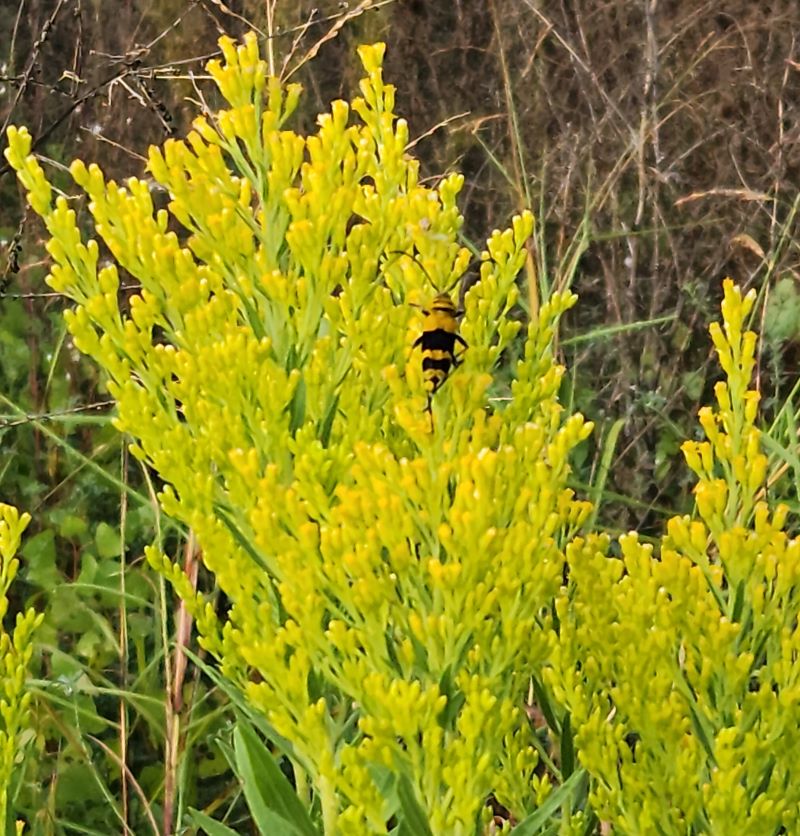
Cold & flu symptoms
Goldenrod is a great diaphoretic. This means when you have a fever it will help open the pores to release the heat. It won’t stop your fever. But it helps your fever work more efficiently at getting its job done.
This along with the anti-inflammatory and astringent properties can help reduce your symptoms and prevent secondary issues that can come from a cold or flu.
Preparation and Use
Goldenrod makes a nice tasting tea which can be used to mask other less favorable tasting herbs in a blend. Make this tea using about 1-2 tsp of herb to 8 oz of water steeped for 5 to 10 min.
Steep your tea longer to create the carminative effects I talked about earlier. And use a stronger tea to use as a wash for wounds and skin care.
The flowers are edible. Make them into fritters, just like dandelion flowers and elder flowers. Dipped in a batter and fried.
Infuse goldenrod flowers and leaves in an oil and use it to massage into sore joints and sore muscles. Then use this oil to make a salve for bee stings or other bug bites.
For the best diuretic properties drink as a cold tea.
For the best diaphoretic properties drink as a hot tea.
You can make a nice goldenrod infused honey that would be great for sore throats too.
Chop the whole plant up and use it to prepare a tincture. This is how I prefer to use it for allergy relief.
Goldenrod’s Lore
Various legends tie goldenrod to the presence of wealth. One source said that, wherever goldenrod grows, gold is buried. Another says if you find goldenrod growing near your home you will have good luck.
It’s also tied to water. Folklore holds that, wherever it grows, a spring must be nearby. And the plants have been used as divining rods, but they way it only works in the hands of the right person.
One story tells how goldenrod got its beautiful bright yellow flowers. It tells of an old woman traveling through the forest and growing weary. She asked all of the trees around her for a walking stick, but they refused. She found a small stick on the ground, and asked it for help instead. The stick agreed, and she used it as a walking stick until she was out of the woods. As soon as she stepped beyond the tree line, she shed her disguise and revealed herself as a fairy. In return for the stick’s help, she sprinkled it with gold.
Final thoughts on Goldenrod
If you go to pick goldenrod flowers you’ll run across the goldenrod spider. She will be white or yellow depending on which flower she is on. And she’s a tenacious hunter easily capturing bugs 3 times her size.
I have found her almost every time I’ve gone out looking for goldenrod. However, if you avoid her, she will avoid you.

Some people may have an adverse reaction to goldenrod so it’s always best to try a small amount first.
There are a few plants that look like goldenrod as well, so it’s always important to know the plant you are using. Be sure to always know what you are picking, using your regional field guide when necessary.
And be mindful that you don’t pick an area clean. You want to make sure that it will be back next year.
Goldenrod is a beautiful flower and I always look forward to seeing them bloom, mostly because they are just so prolific. When you run across them there is usually a large area of them, and it’s pure beauty.
I hope you enjoy them as much as I do. Let me know if you’ve used goldenrod for anything in the past or if you plan to in the future.
